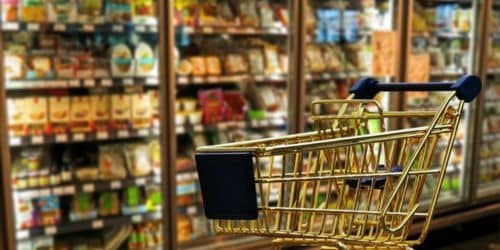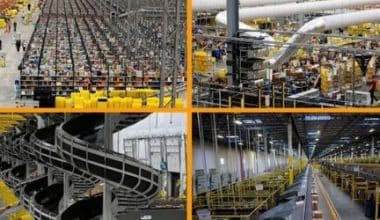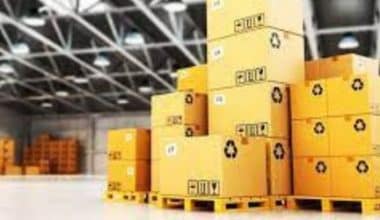Retailing is the process of selling goods and services directly to consumers through various channels such as brick-and-mortar stores, online platforms, or mobile applications. It involves a complex network of activities starting from sourcing products from manufacturers or suppliers, storing them in warehouses, displaying them in stores, and finally selling them to consumers. Today, we will be focusing this article on what retailing is all about and the success of a retail operation depending largely on understanding consumer behavior, market trends, and effective supply chain management.
What do you mean by Retailing?
Retailing is the process by which businesses sell goods or services directly to consumers for personal, non-commercial use. It involves the sale of goods and services through various channels, including physical stores, online platforms, mail-order catalogs, and direct sales. Retail businesses offer a wide range of products, including clothing, electronics, groceries, household items, and more. Retailers also engage in a variety of activities, from merchandising and advertising to customer service and management. Retailing plays a critical role in the economy, accounting for a significant portion of GDP and providing employment opportunities for millions of people worldwide.
One of the most critical aspects of retailing is ensuring that the right products are available at the right time and the right price. This involves various activities, such as purchasing, inventory management, and pricing strategies. Retailers also devote significant resources to marketing, advertising, and promotions to attract and retain customers.
Retailing also has significant economic impacts, contributing to national and local economies by creating jobs and generating tax revenue. The industry’s continued growth relies on improvements in productivity and efficiency, innovation, and consumer satisfaction.
What is the Importance of Retailing?
Retailing plays a crucial role in the economy and society, and its importance can be seen in several ways:
- Meeting Consumer Needs: It provides a platform for consumers to access a wide range of products and services that meet their needs, preferences, and aspirations.
- Job Creation and Employment: Retailing is a significant source of employment. It creates jobs at various levels, from sales associates and store managers to merchandisers, marketers, and customer service representatives.
- Economic Growth and Revenue Generation: Retailing contributes to economic growth by driving consumption and spending.
- Market Competition and Efficiency: Retailing fosters competition in the marketplace, benefiting consumers through lower prices, better quality products, and improved customer service.
- Urban and Rural Development: Retail businesses contribute to the development and vitality of urban and rural areas. They establish physical stores or online platforms, creating commercial spaces that attract foot traffic and other businesses.
- Consumer Trends and Market Insights: Retailers are at the forefront of understanding consumer behavior, preferences, and market trends.
Key Elements of Retailing:
#1. Product Selection
Retailers choose which products to offer based on market demand, consumer preferences, and their target audience.
#2. Pricing Strategy
Retailers determine the pricing of their products. They take into account factors like cost of goods, competition, market conditions, and desired profit margins.
#3. Store Operations
This involves managing the physical retail space, including store layout, visual merchandising, inventory management, staffing, and customer service.
#4. E-commerce and Online Presence
Many retailers now operate through e-commerce platforms, allowing customers to make purchases online.
#5. Marketing and Promotion
Retailers employ various marketing strategies to attract customers and generate sales.
#6. Customer Experience
Providing excellent customer service is crucial in retailing.
Critical Functions Contributing to the Successful Operation of Retail Businesses
#1. Merchandising
Retailers curate and select the assortment of products they offer to customers. This involves sourcing, buying, and appealingly displaying merchandise to attract consumers.
#2. Inventory Management
Efficient inventory management ensures that retailers have the right quantity of products available to meet customer demand. This involves forecasting, replenishing stock, and minimizing excess inventory or stockouts.
#3. Pricing
Retailers determine the pricing strategy for their products, considering factors such as costs, competition, customer perception, and desired profit margins.
#4. Promotion and Marketing
Retailers employ various marketing techniques to create awareness and drive customer interest. This includes advertising, promotions, loyalty programs, and personalized marketing campaigns.
#5. Customer Service
Providing excellent customer service is crucial for retailers to build customer loyalty and satisfaction. This includes offering assistance, addressing inquiries, and resolving issues to ensure a positive shopping experience.
The Evolving Nature of Retailing
Retailing continues to evolve rapidly due to technological advancements and shifting consumer preferences. Key trends shaping the industry include:
#1. E-commerce Growth
Online shopping has experienced significant growth, with consumers increasingly opting for the convenience of shopping from home.
#2. Mobile Commerce
The use of smartphones has led to the rise of mobile commerce. It is allowing consumers to make purchases through mobile apps and optimized websites.
#3. Personalization
Retailers are utilizing data and analytics to personalize the shopping experience. It allows them to offer tailored recommendations and customized offers based on individual preferences and behaviors.
#4. Seamless Integration
Retailers are striving to integrate online and offline channels to provide a cohesive and connected shopping experience, allowing customers to seamlessly switch between channels.
#5. Sustainability and Ethical Practices
Consumers are placing greater importance on sustainability and ethical practices. Retailers are adapting by incorporating environmentally friendly initiatives and transparent supply chains.
What are the Types of Retailing?
There are several types of retailing, including:
- Store Retailing
- Non-store Retailing
- Online Retailing or e-commerce
- Corporate Retailing
- Direct Marketing
- Electronic Retailing or e-tailing
- Automatic Merchandising
- Specialty Retailing
- Service Retailing
- Non-profit Retailing
- Catalog Retailing
- Pop-up Retailing
Online Retailing
Online retailing, also known as e-commerce or electronic retailing, refers to the process of selling goods and services to consumers through digital platforms, primarily the Internet. It has gained significant popularity and transformed the retail industry by offering convenience.
Key Aspects of Online Retailing
#1. E-commerce Websites
Online retailers operate through dedicated e-commerce websites, where customers can browse and purchase products.
#2. Mobile Commerce (m-commerce)
Online retailing has expanded to mobile devices through mobile commerce.
#3. Virtual Marketplaces
Online retailers may also participate in virtual marketplaces such as Amazon, eBay, or Alibaba. Multiple sellers offer their products on these centralized platforms.
#4. Digital Marketing
Online retailers employ digital marketing strategies to attract customers and drive traffic to their websites.
#5. Logistics and Fulfillment
Online retailers manage logistics and fulfillment processes to ensure the timely delivery of products to customers. Some online retailers partner with third-party logistics providers or employer fulfillment centers for efficient order fulfillment.
#6. Customer Experience
Online retailers prioritize providing an excellent customer experience.
Benefits of Online Retailing
#1. Global Reach
Online retailing allows retailers to reach customers worldwide, breaking down geographical barriers and expanding their potential customer base.
#2. Convenience
Customers can shop anytime and anywhere, eliminating the need to visit physical stores.
#3. Product Variety and Comparison
Customers can compare prices, features, and customer reviews across different brands and make informed purchase decisions.
#4. Lower Overhead Costs
They do not require physical retail spaces or incur expenses related to rent, utilities, and maintenance.
#5. Personalization and Targeted Marketing
They can offer tailored product recommendations, personalized offers, and targeted marketing campaigns based on customer preferences and behavior.
Retailing Vs Wholesaling
Retailing and wholesaling are distinct components of the distribution process in the supply chain.
Both involve the buying and selling of products, there are significant differences in their roles and functions.
Retailing involves selling goods or services directly to end consumers for personal use. Retailers focus on meeting customer needs and providing a positive shopping experience. They operate through various channels, curate product assortments, and create brand identities to attract consumers. Retailers sell products in smaller quantities suitable for individual consumers and offer convenience, immediate availability, and personalized services.
Wholesaling, on the other hand, involves the sale of goods or merchandise to retailers, other businesses, or institutional buyers. Wholesalers act as intermediaries between manufacturers or producers and retailers. They primarily serve businesses, facilitating the movement of goods in bulk. Wholesalers buy products in large quantities, handle distribution and logistics, and offer services such as warehousing, inventory management, and order processing. They establish strong relationships with manufacturers and provide support services to enhance the efficiency of the supply chain.
What are the Types of Retailers?
There are several types of retailers, each catering to different customer segments and operating in distinct formats:
- Brick-and-Mortar Retailers
- E-commerce Retailers
- Omni-Channel Retailers
- Franchise Retailers
- Service Retailers
- Catalog Retailers
- Pop-up Retailers
- Non-profit Retailer
- Discount Retailers
- Department Stores
What are the Elements of Retailing?
The elements of retailing include the following:
- Product: This refers to the goods or services that retailers offer to their customers. It may include the quality, variety, packaging, design, and brand name of the products.
- Price: This refers to the amount that customers pay for the products. It includes factors such as the pricing strategy, discounts, promotions, and payment methods.
- Place: This refers to the location and accessibility of the retailer’s stores or online platforms. It includes factors such as the store layout, store design, store atmosphere, and ease of navigation on the retailer’s website.
- Promotion: This refers to the advertising and marketing strategies that retailers use to reach out to their customers. It includes methods such as social media, email marketing, direct mail, and in-store displays.
- People: This refers to the staff and employees who work in retail stores and interact with customers. It includes factors such as employee training, staff behavior, and employee motivation.
- Presentation: This refers to how products are displayed in-store or online. It includes factors such as product placement, packaging, merchandising, and visual displays.
What are the Five Functions of Retailers?
There are five main functions of retailers in the retail industry:
- Buying: Retailers purchase products from manufacturers or distributors to sell to their customers. This involves identifying consumer demand, selecting suitable products, negotiating purchase terms, and maintaining acceptable inventory levels.
- Merchandising: Retailers work to display and promote products appealingly and effectively to attract customers. This includes determining product assortment, pricing, and merchandising displays that showcase products to their best advantage.
- Promotion: Retailers develop and execute marketing and advertising campaigns to increase brand awareness and drive sales. This includes advertising, personal selling, product displays, discount offers, and other promotional activities.
- Sales: Retailers facilitate the transfer of products from the store or online platforms to customers. This involves providing prompt and effective service to shoppers, accepting payment, and for products purchased. It also involves handling returns or other customer service issues.
- Management: Retailers run efficient and productive store operations, managing employee scheduling, inventory management, accounting, and financial reporting. This also involves ensuring safety, security, and regulatory compliance in the store.
Conclusion
Retailing is a fundamental aspect of the modern economy that involves the sale of goods and services to end consumers. It encompasses various activities, including product selection, pricing, promotion, and distribution, aimed at satisfying customer needs and generating profits. The different types of retailers include brick-and-mortar stores, e-commerce platforms, and omnichannel retailers. There are many diverse methods through which consumers can engage in retail transactions.
The critical functions of retailing include merchandising, inventory management, customer service, and marketing. The evolving nature of retailing, influenced by technological advancements and changing consumer preferences, emphasizes the significance of adapting to these shifts. Key challenges that retailers face today, such as increased competition, changing technologies, and shifts in consumer behavior. Retailers address these challenges by implementing various strategies to attract and retain customers.
Related Articles
- BEST RETAIL COMPANIES TO WORK FOR: 11 Best Retail Employers 2023
- How Does ELECTRONIC RETAILING Work: E-tailing vs E-commerce
- RETAIL INSURANCE: Meaning & How to Get One for Your Business
- RETAIL MARKETING: Definition, Types, Strategies & Why Is It Important?
- RETAIL ASSISTANT: Definition, Duties, Salary & Resume






